
This article was written by Martha Hayden and was originally published on The Restless Viking website on August 29, 2023.
The Battle Creek Cereal War had been a trifecta between the Kellogg brothers; John and William along with a previous patient, C.W. Post. Join my husband, Chuck, and I as we learn about this cereal war and how these men have shaped our nation’s morning habits.
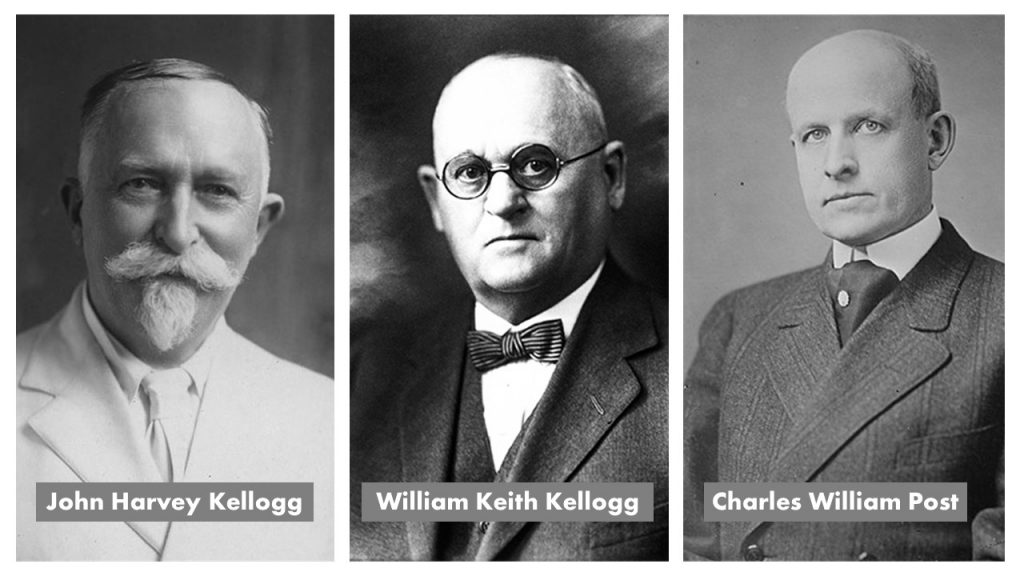
The First Cereals
For centuries a morning snack to “break one’s fast” had been a quickly accessible food item. Possibly it would have been left over from last night’s “supper” or their larger mid-day meal, “dinner.” In the mid 1800’s having cereal for “breakfast” had been a new concept.
A New Yorker, James Caleb Jackson, had actually made the very first cereal in 1863. It had been hard bits of dry graham flour which needed to soften in milk overnight so the morsels were edible. He served this “granula” at his health sanitarium.
Several years later the invention of ‘modern’ cereal has been credited to Dr. John Harvey Kellogg along with his brother, William Keith Kellogg. The pair had developed a recipe of twice baked biscuits that were crumbled. This granula had been served to the patients at the Battle Creek Sanitarium. Well, when Caleb James Jackson threatened a lawsuit, the Kellogg brothers quickly changed a ‘u’ to an ‘o’ naming their creation, “granola.”
It is suspected that these inventors had been independently inspired by hardtack. These hard biscuits had sustained troops during the Civil War. (1861-1865) Mixed with flour, salt and water hardtack would remain edible for extended periods of time.
Dr. John Harvey Kellogg’s good intentions had been focused on his patients. Their nutrition and ‘productive waste evacuation’ had been part of his wholistic treatment plan at the Seventh Day Adventists’ Sanitarium in Battle Creek.
The Kellogg Sanitarium
One of the Seventh Day Adventist’s beliefs is that a person’s body is viewed as “a living temple,” Dr. John Harvey Kellogg held firmly to this ideology of cleanliness, prohibition and abstinence. A decade after the sanitarium’s opening (in 1866), Dr. John Harvey Kellogg managed the world renown health center until his death in 1943.

Elegance prevailed at this world renown facility as patients focused on their health. Amelia Earhart, J.C. Penny, President William Howard Taft, Henry Ford and Thomas Edison had experienced ‘clean living’ at “The San,” as it was called.
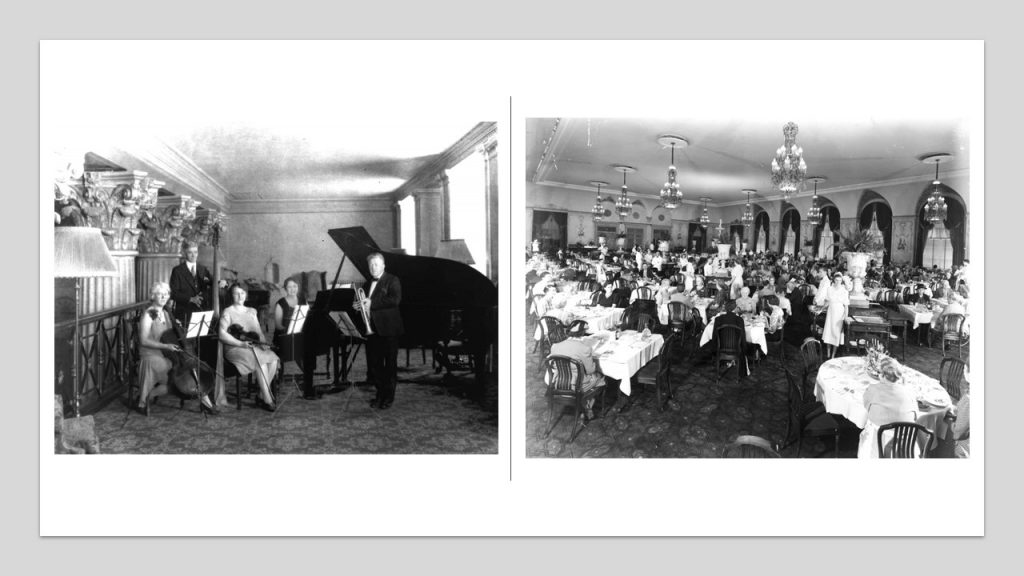
In 1902 when fire destroyed the original structure an entire health complex of 30 buildings had been established in Battle Creek. By 1908 another location opened two miles north of Orlando, ‘The Florida Sanitarium and Hospital. ‘
Charles William Post
The initial cereal war grew it’s roots in 1891 with a patient, Charles William Post, who had suffered from depression and attended “The San” hoping for relief. C.W. Post had been assigned to work in the kitchen making ‘granola’ from February to November.
Following his release C.W. Post had founded a cereal company, “Postum” and coined the phrase, “Road to Wellville.” He had begun producing his enhanced granola recipe in a barn. By 1897 C.W. Post was effectively manufacturing “Grape Nuts,” which had been similar to the Kellogg ‘granola’ recipe with sugar added.
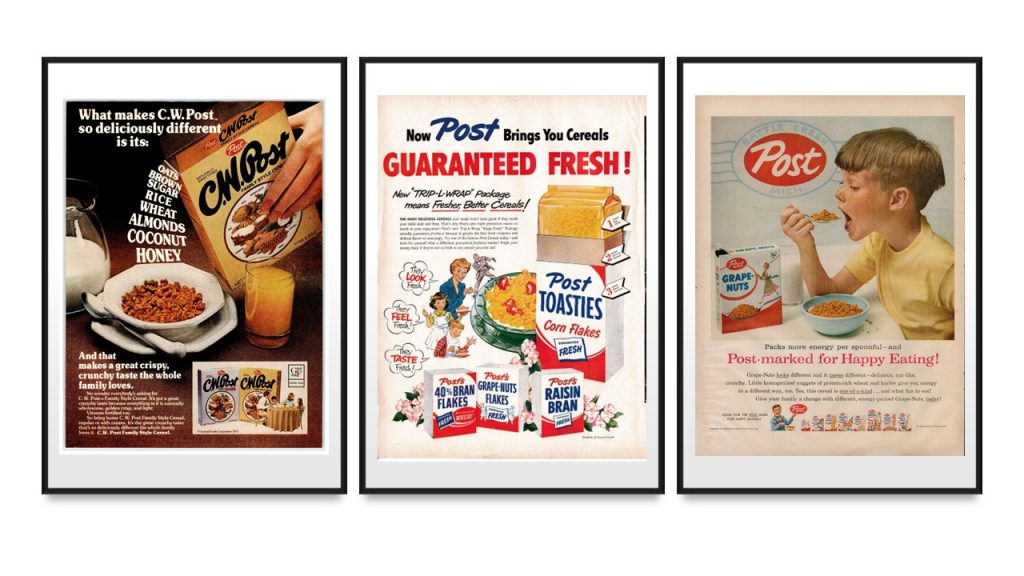
The Brother’s War
The Kellogg brothers, John and William, held varying views of Post’s new product. Dr. John Harvey’s focus had been entirely on his patients and their health. John simply shook his head and shrugged at C.W. Post’s Grape-Nuts cereal.
William, however, felt competitive and urged his sibling, John, to market their granola to create an income. Dr. John Harvey Kellogg, who had viewed himself as ‘extremely educated,’ dismissed his younger brother’s request.
Corn Flakes
William continued to work in the kitchen making granola. One morning William came into the kitchen to find a batch of granola dough which had been left out over night. Trying to save the batch, he rolled out the dough and baked it. The mixture had become flakey. He called this new discovery, “Granose.” In 1902 they had reworked the recipe with maize and renamed the creation, “Corn Flakes.”
The Brother’s Buy Out
Continuing to want to market their cereals, William Kellogg had finally convinced his brother to buy out of John’s portion of the Kellogg business in 1906. John would be free to pursue caring for his patients and organizing their second sanitarium in Florida, which had opened in 1908. William would be able to begin manufacturing, advertising and selling cereals.
Unique Marketing Brings Brothers To Court
William Kellogg had created a unique marketing scheme, “Wink at your grocer and see what you get!” Grocers would distribute free samples of Kellogg’s Corn Flakes. This clever technique had peeked the public’s interest and helped to sell more cereal.

However, conservative Dr. John Harvey Kellogg had been horrified by this ‘flirting’ method of advertising and wanted them to stop using the name “Kellogg” with the cereal. The brothers fought in court for over a decade about using the family name.
Factory Fire
Around this same time a mysterious, devastating fire had destroyed the Corn Flakes factory including the specialized rollers used in making the cereal. William Kellogg contacted the company to replace these rollers and learned that C.W. Post had purchased the rights for these stylized rollers which Post also used in making his “Toasties.” (I can’t help but wonder who may have caused this fire!)
William, an optimist, looked at the situation as an opportunity to create a more efficient system for producing Corn Flakes. New rollers were designed and installed along with a conveyor belt system. Within six months the Kellogg factory began manufacturing Corn Flakes 24 hours each day.
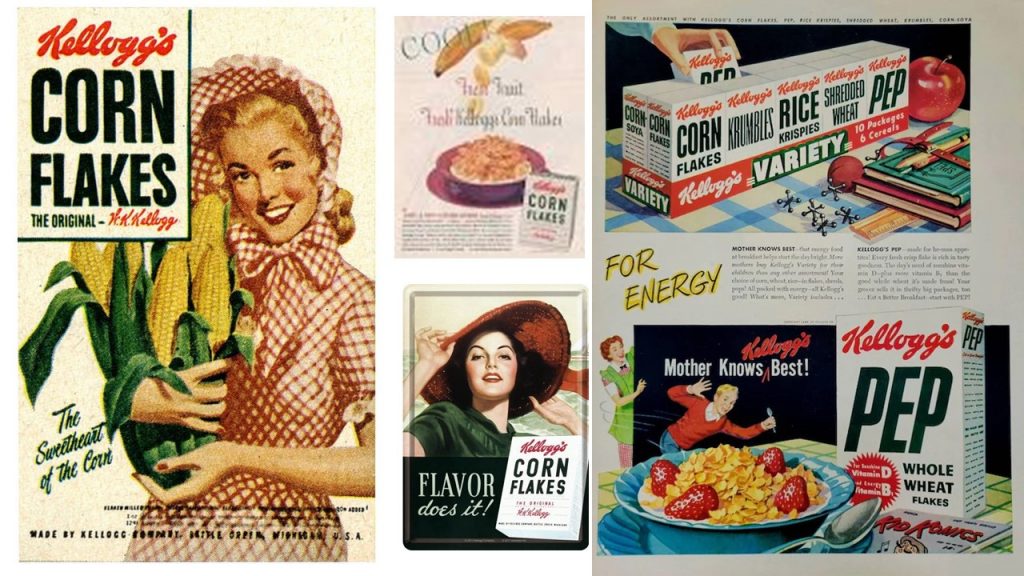
A Decade Of Court Dates
Finally in 1920 a judge had sided with William Keith Kellogg in keeping the family name on the cereal products. William pursued his cereal production with zest and vigor, competing with C.W. Post.
Dr. John Harvey Kellogg grew deeper in his conservative, extremist values. The doctor worked with intensity at upholding abstinence and purity in Battle Creek as well as The Florida Sanitarium.
While the Kellogg brothers pursued different courses, our nation consumed more and more breakfast cereal. Having a bowl of cereal had become a daily routine in most households during the following decades.
The National Cereal Festival – Battle Creek
With both Kellogg’s and Post’s factories manufacturing cereal in Battle Creek the city had earned the name “Cereal City.” The residents have embraced this heritage!
On June 28, 1956 Battle Creek celebrated the 50th anniversary of the Kellogg Company with a National Cereal Festival.
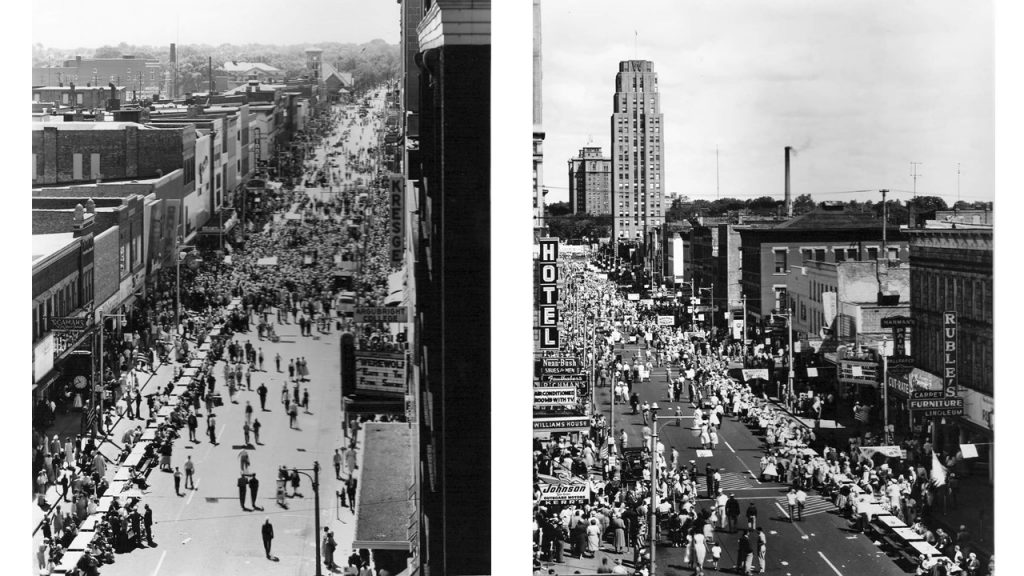
In 1976 this festival became an annual event. In 1979 they set their first Guinness Book World Record for the longest breakfast table! Following the 2019 pandemic, the festival had restarted again on June 11, 2022.
Are Post and Kellogg Still Rivals Today?
Yes. Capitalism creates competition. For years General Mills has actually led the cereal industry with Kellogg close behind, followed by Post.
During the pandemic, there had been an uptick in cereal profit. Today however, people have desired an ‘on the go’ breakfast option rather than sitting down with a bowl of cereal in the morning.
Recently Kellogg shared plans to break off into three separate companies: cereal, snacks and plant based products. With tax-free incentives, Kellogg hopes to bring an upswing in their sales. Kellogg’s largest factory is now located in the United Kingdom.
C.W. Post cereals continue to keep up with their competition as the third place cereal company. Fruity Pebbles cereal is their number one seller. In second and third place are Honey Bunches of Oats with Almonds and Honey Bunches of Oats Honey Roasted cereal. Cocoa Pebbles stands in fourth place. C.W. Post’s 531 Battle Creek employees produce these top sellers daily!
This evolution of cereal has been a fascinating journey! I appreciate you joining us as we learned about the people behind ‘The Cereal War.”
Chuck and Martha Hayden, aka The Viking and Poppins, enjoy going on adventures off the beaten path. They also like to share their explorations with others. The Viking is a retired expedition leader while Poppins is a retired teacher. The two offer independent views of their journeys showcasing places, people, and cultures as they explore the world. Visit and follow them on their website and social media accounts. Website | Facebook | Instagram |YouTube

Leave a Reply